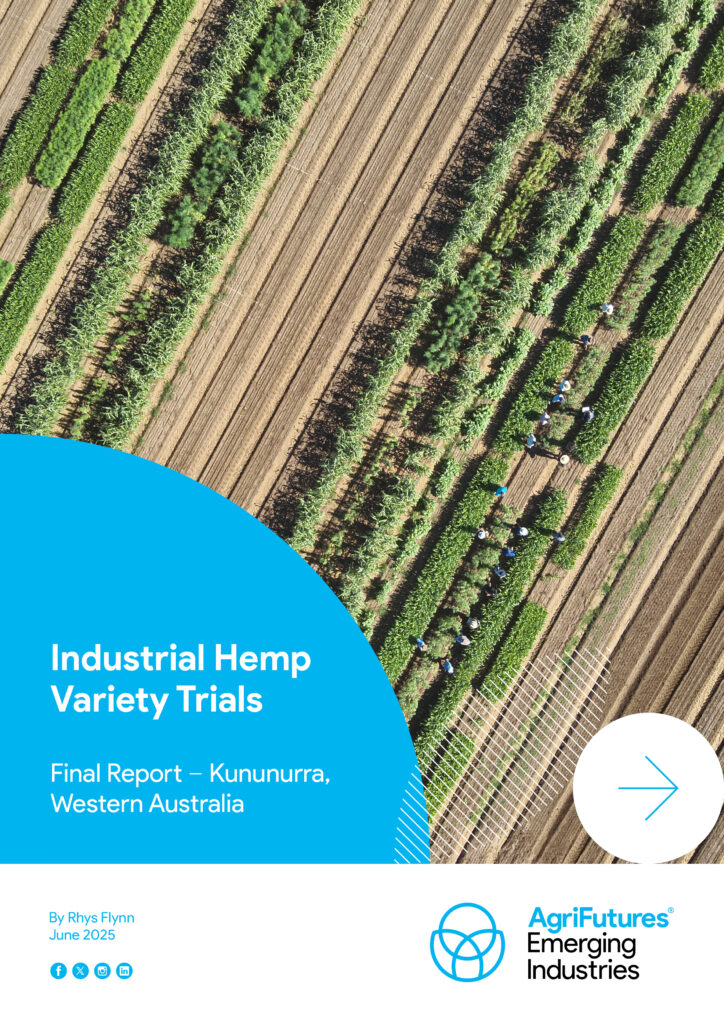AgriFutures Australia has identified strong growth potential for industrial hemp (Cannabis sativa L.), driven by its sustainable uses. The 2017 approval of hemp grain for human consumption by FSANZ has further accelerated industry expansion in Australia. However, the industry still faces challenges such as limited regional agronomic data, unclear varietal suitability and inconsistent production practices. Addressing these knowledge gaps is critical to realising the economic and environmental potential of industrial hemp.
The AgriFutures Emerging Industries Program has invested in a three-year Industrial Hemp Variety Trial (IHVT) program to understand grain and dual-purpose varietal performance and suitable sowing times across Australia. Trial sites were established in nine locations including in the Northern Territory, South Australia (two), Tasmania, Victoria, Western Australia (two), New South Wales and Queensland.
Over three seasons between 2022 and 2024, the Kununurra Industrial Hemp Variety Trial (IHVT) in Western Australia evaluated 19 hemp varieties across three sowing times: mid-April, mid-May and mid-June, with slight variations between seasons. The objective was to identify varieties that are well-suited for the Kununurra climate and cropping system. The trials revealed that late-maturing varieties, specifically Bama, Han Cold, King Gee and Yuma, demonstrated superior grain and dry matter yields when sown in April as opposed to later sowing dates. Early maturing varieties tended to produce less biomass and lower yields due to their rapid response to heat, while mid- and late-maturing types benefitted from prolonged vegetative growth, leading to increased yield and suitability for dual-purpose harvests. Planting density was identified as a key factor, with higher densities benefiting early maturing types and moderate densities suiting mid- to late-maturing varieties.





